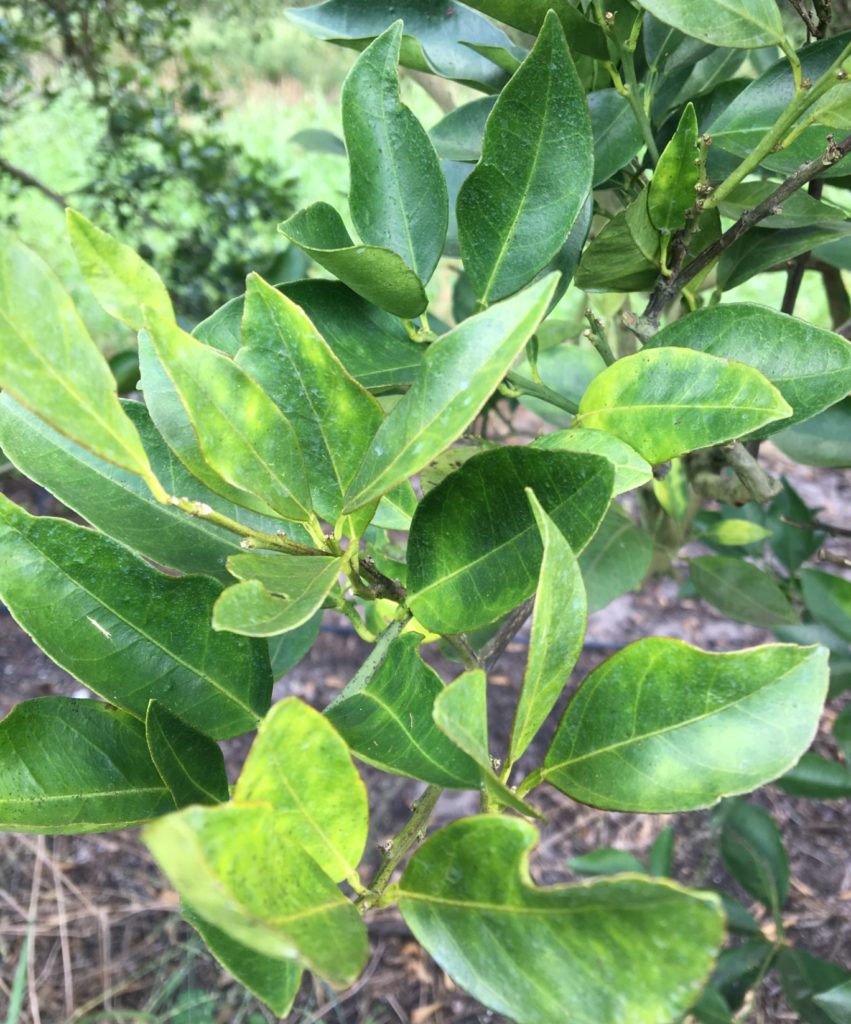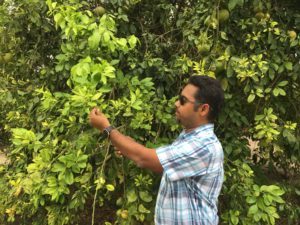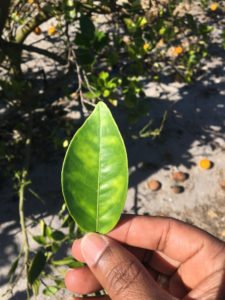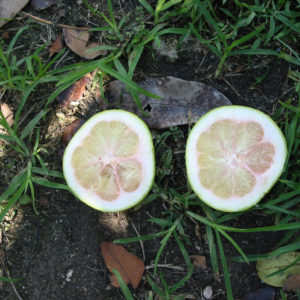Texas A&M AgriLife Research receives $1.7 million-plus from USDA to combat citrus greening

WESLACO – Texas A&M AgriLife Research has been awarded more than $1.7 in U.S. Department of Agriculture funding for two projects in multi-state, multi-institution grants in collaboration with the University of California System and others to combat citrus greening.

Citrus greening, also known as Huanglongbing disease or HLB, has devastated citrus fruit crops in Florida, causing billions of dollars in agricultural losses, and has now made its way to Texas and California. It is considered the most devastating disease to citrus, threatening worldwide production.
Funding for the projects was provided through the USDA National Institute of Food and Agriculture Citrus Disease Research and Extension program.
Dr. Kranthi Mandadi, an AgriLife Research assistant professor in the plant pathology and microbiology department at the Texas A&M AgriLife Research and Extension Center in Weslaco, and Dr. Sandun Fernando, an AgriLife Research professor and director of the graduate program in the biological and agricultural engineering department in College Station, will lead research activities for Texas A&M.
The first study will be in collaboration with the University of California-Riverside, and the second will be in collaboration with the University of California-Davis.

“This collaborative research is addressing a problem that affects citrus growers in Florida, Texas, California and worldwide,” Mandadi said. “Economic losses from citrus greening are huge, including the potential loss of jobs and associated economic activity. There are also environmental impacts from the current unsustainable measures to manage citrus greening. We expect that these two projects will create both near- and long-term solutions in the ongoing battle against citrus greening.”
Mandadi said both projects will involve the use of a new AgriLife Research technology — microbial hairy root system — that will allow faster screening of therapies to effectively control HLB.
“Several plant pathogens are unculturable and are spread by insect vectors,” said Dr. David Ragsdale, chief scientific officer and AgriLife Research associate director, College Station. “In the case of citrus greening, the pathogen is spread by the Asian citrus psyllid.”
Current methodologies can take a year or more to screen therapies against such fastidious pathogens in citrus, Ragsdale said.
“But the microbial hairy root system, developed by Dr. Mandadi through seed funding from the AgriLife Research Vector-Borne Diseases program, allows up to four times faster screening of therapies and speeds up the discovery process,” he explained.
The first project, “Systems Biology to Elucidate the CLas-Citrus-Psyllid Interactions Needed to Culture, Inhibit, and Detect CLas for Successful HLB Management,” is to design, construct and test peptides that specifically target and kill CLas to create highly effective prophylactic and curative HLB treatments. CLas, or Candidatus Liberibacter asiaticus, is a phloem-limited bacterium that is the causal agent of citrus greening disease.
“This project addresses the highest priority topic of the Citrus Disease Research and Extension program, which is to find therapies to prevent or suppress CLas bacteria within trees,” said Dr. James Borneman, professor in the microbiology and plant pathology department at UC-Riverside and lead investigator for the project.
Borneman said to substantially increase the efficacy of this project, the researchers are borrowing a technique used in human infectious disease, which can increase the efficacy of antimicrobial peptides by orders of magnitude, with some being able to kill greater than 500 times more bacteria.
The second project, “Exploiting Pattern-triggered Immunity to Combat HLB,” will combine pest and pathogen management therapies with plant breeding, genetics and biotechnology.

“There is a pressing need to identify therapies and treatment to protect citrus trees against HLB in existing groves as well as develop new commercial varieties that are tolerant or resistant to HLB in all production areas,” said Dr. Gitta Coaker, professor in the plant pathology department at UC-Davis and lead investigator for the project. “Our approach in this project is to address this challenge by increasing the potential of citrus’ own innate pattern-triggered immunity.”
She said the overall goal of the project is to harness pattern-triggered immune responses in citrus to control HLB and develop resistant germplasm.
“Such responses identified in cultivated citrus will be used to develop a therapy that will enhance HLB tolerance or resistance in existing groves by boosting immunity,” Coaker said. “And the identified immune responses can also be used as markers to accelerate traditional breeding efforts by guiding the selection of breeding parents and progeny.”

She said molecular markers correlated with HLB resistance have not yet been identified, so the project will employ state-of-the-art biotechnological approaches to generate HLB-resistant citrus varieties.
This project also interfaces with an undergraduate, graduate and postdoctoral student training program targeting minority participation in science, technology, engineering and mathematics, STEM, at the University of California and Texas A&M University.
Students will be trained in cutting-edge citrus research and have the opportunity to present their results to, and interact with, the stakeholders and at citrus industry and scientific meetings.
Mandadi said all stakeholders – those in the citrus industry, growers, breeders, residential citrus owners, the scientific community and others – will be apprised of findings that result from the two projects.
“As we pursue these projects, we will use multiple approaches to engage those stakeholders and educate end users on any relevant information arising from our research,” he said. “We will communicate through scientific presentations at research meetings, grower workshops in citrus-growing regions of the country, print and electronic media, peer-reviewed publications and any other appropriate means to educate and inform.”
Writer: Paul Schattenberg, 210-859-5752, [email protected]
Contact: Dr. Kranthi Mandadi, 956-968-5585, [email protected]


